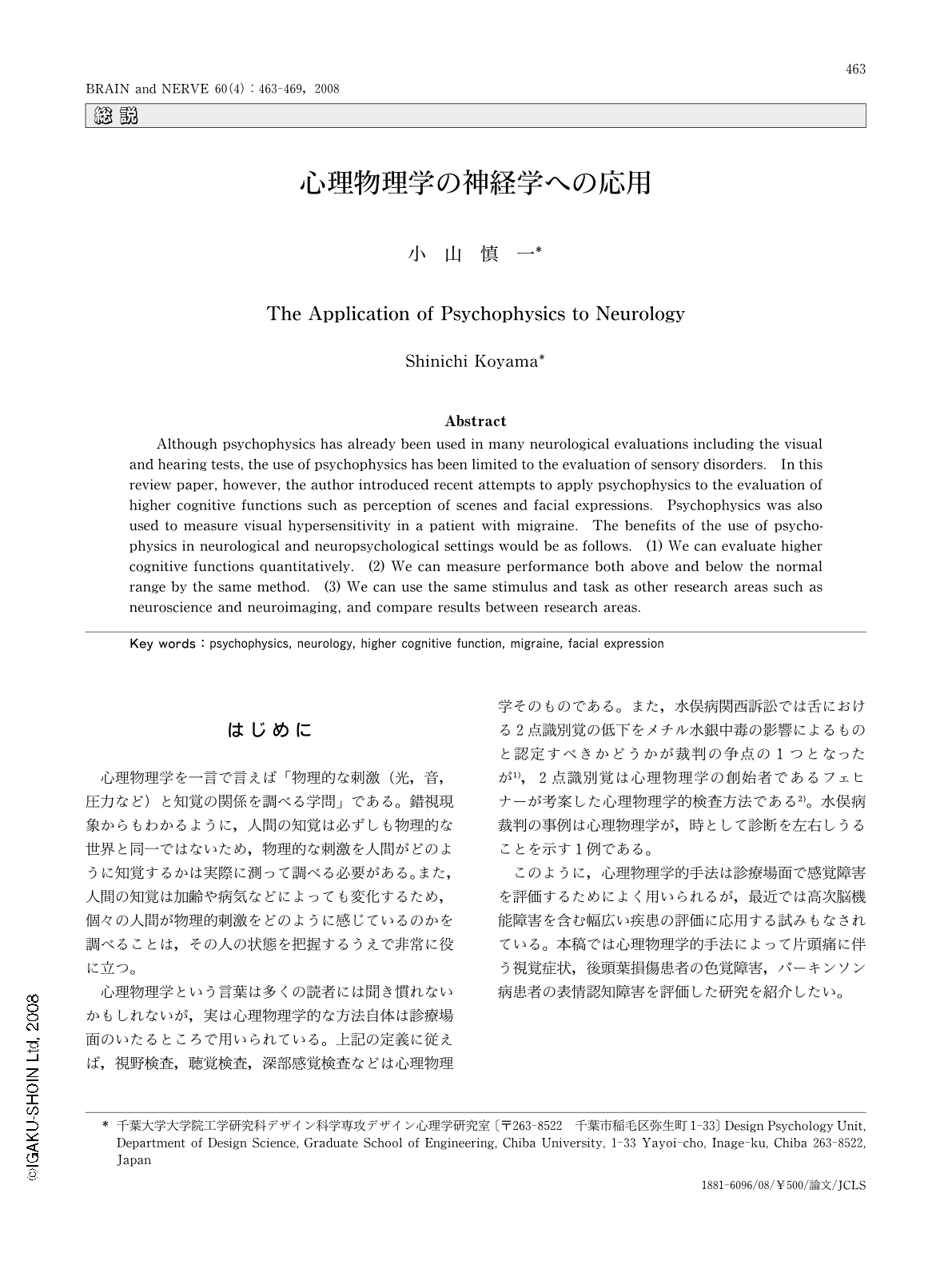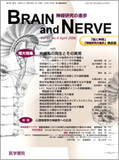Japanese
English
- 有料閲覧
- Abstract 文献概要
- 1ページ目 Look Inside
- 参考文献 Reference
はじめに
心理物理学を一言で言えば「物理的な刺激(光,音,圧力など)と知覚の関係を調べる学問」である。錯視現象からもわかるように,人間の知覚は必ずしも物理的な世界と同一ではないため,物理的な刺激を人間がどのように知覚するかは実際に測って調べる必要がある。また,人間の知覚は加齢や病気などによっても変化するため,個々の人間が物理的刺激をどのように感じているのかを調べることは,その人の状態を把握するうえで非常に役に立つ。
心理物理学という言葉は多くの読者には聞き慣れないかもしれないが,実は心理物理学的な方法自体は診療場面のいたるところで用いられている。上記の定義に従えば,視野検査,聴覚検査,深部感覚検査などは心理物理学そのものである。また,水俣病関西訴訟では舌における2点識別覚の低下をメチル水銀中毒の影響によるものと認定すべきかどうかが裁判の争点の1つとなったが1),2点識別覚は心理物理学の創始者であるフェヒナーが考案した心理物理学的検査方法である2)。水俣病裁判の事例は心理物理学が,時として診断を左右しうることを示す1例である。
このように,心理物理学的手法は診療場面で感覚障害を評価するためによく用いられるが,最近では高次脳機能障害を含む幅広い疾患の評価に応用する試みもなされている。本稿では心理物理学的手法によって片頭痛に伴う視覚症状,後頭葉損傷患者の色覚障害,パーキンソン病患者の表情認知障害を評価した研究を紹介したい。
Abstract
Although psychophysics has already been used in many neurological evaluations including the visual and hearing tests, the use of psychophysics has been limited to the evaluation of sensory disorders. In this review paper, however, the author introduced recent attempts to apply psychophysics to the evaluation of higher cognitive functions such as perception of scenes and facial expressions. Psychophysics was also used to measure visual hypersensitivity in a patient with migraine. The benefits of the use of psychophysics in neurological and neuropsychological settings would be as follows. (1) We can evaluate higher cognitive functions quantitatively. (2) We can measure performance both above and below the normal range by the same method. (3) We can use the same stimulus and task as other research areas such as neuroscience and neuroimaging, and compare results between research areas.

Copyright © 2008, Igaku-Shoin Ltd. All rights reserved.


